
The Republic F-84 Thunderjet was an American turbojet fighter-bomber aircraft. Originating as a 1944 United States Army Air Forces (USAAF) proposal for a "day fighter", the F-84 first flew in 1946. Although it entered service in 1947, the Thunderjet was plagued by so many structural and engine problems that a 1948 U.S. Air Force review declared it unable to execute any aspect of its intended mission and considered canceling the program. The aircraft was not considered fully operational until the 1949 F-84D model and the design matured only with the definitive F-84G introduced in 1951. In 1954, the straight-wing Thunderjet was joined by the swept-wing F-84F Thunderstreak fighter and RF-84F Thunderflash photo reconnaissance aircraft.

The Republic F-84F Thunderstreak was an American swept-wing turbojet-powered fighter-bomber. The RF-84F Thunderflash was a photo reconnaissance version.

The House of Lippe-Biesterfeld was a comital cadet line of the House of Lippe.

Wjelsryp is a village in Waadhoeke municipality in the province of Friesland, the Netherlands. It had a population of around 463 in January 2017.

Prince Bernhard of Lippe-Biesterfeld was Prince of the Netherlands from 6 September 1948 to 30 April 1980 as the husband of Queen Juliana. They had four daughters together, including Beatrix, who was Queen of the Netherlands from 1980 to 2013.

The 1961 F-84 Thunderstreak incident, occurring on 14 September 1961, was an incident during the Cold War, in which two Republic F-84F Thunderstreak fighter-bombers of JaBoG 32 of the German Air Force (Luftwaffe) crossed into East German airspace because of a navigational error, before landing at Berlin Tegel Airport. The two planes successfully evaded a large number of Soviet fighter planes by finding cover in a heavy layer of clouds, but also by the actions of an airman at the United States Air Force (USAF) air route traffic control center at Berlin Tempelhof Airport who ordered the planes on to Berlin rather than forcing them to turn around and face the pursuing fighter planes. The event came at a historically difficult time in relations between West Germany and East Germany. Only a month before, the Berlin Wall had been built, which completely cut off West Berlin from surrounding East Germany and from East Berlin. It also came three days before the West German federal election, held on 17 September 1961.

Taktisches Luftwaffengeschwader 31 "Boelcke", formerly known as Jagdbombergeschwader 31, is a fighter-bomber wing of the German Air Force (Luftwaffe). The wing is based in west Germany at Nörvenich Air Base. Its role are Air Interdiction, Offensive Counter Air and Close Air Support. The wing flies the Eurofighter Typhoon.

Jagdbombergeschwader 32 was a fighter-bomber wing of the German Air Force (Luftwaffe). The wing was based in the south of Germany at Lechfeld Airbase and flew Tornado IDS and Tornado ECR planes in the Suppression of Enemy Air Defenses role.
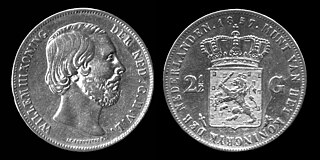
The style of the Dutch sovereign has changed many times since the establishment of the Kingdom of the Netherlands due to formations and dissolutions of personal unions, as well as due to marriages of female sovereigns and cognatic successions.
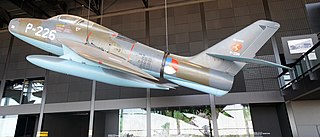
On 20 November 1960 a F-84F Thunderstreak of the Royal Netherlands Air Force crashed at 7:50pm into a farm in Lutjelollum between Wjelsryp and Franeker, the Netherlands. The pilot and the family of six people who lived at the farm were all killed. The farm was destroyed and burned down and the livestock was killed.

On 8 July 1957, a de Havilland Venom operated by the 60 Squadron Royal Air Force crashed after departure from Tengah Air Base into a building block and exploded. During the crash, four people died including the pilot. Two more people died during the rescue operation. Nineteen people were injured.

On 22 September 1956, a Lockheed T-33 of the Royal Netherlands Air Force crashed at c. 01:45pm in a housing block in Eindhoven, the Netherlands. The pilot and one person on the ground were killed. Four houses burned down, twelve houses partly burned down and many more were severely damaged.
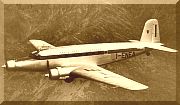
On 1 July 1948 the Avio Linee Italiane Fiat G.212PW “I-ELSA” was an international scheduled passenger flight from Milano-Linate Airport, Italy to Brussel-Zaventem Airport, Belgium. The airplane crashed during an emergency landing at 12:20pm local time. Eight of the twelve people on board were killed.
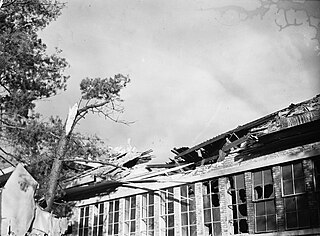
On 7 October 1946 a Fairey Firefly of the Netherlands Naval Aviation Service crashed next to the Hogere Burgerschool in Apeldoorn, the Netherlands. The burning fuel tank fell into the gym where 27 students were at the time. Of the 27 students, 22 lost their lives, together with the pilot Max Christern. The pilot's mother died of a heart attack later that day, after she arrived at the scene of the crash and was told about his fate.
Max Wilhelm Douwe Christern was a Dutch-born German aviator of Swedish descent. During World War II he fled by plane to avoid conscription and became a pilot at the Royal Air Force and after the war at the Royal Netherlands Air Force. On 7 October 1946 he caused the 1946 Apeldoorn aircraft crash killing himself and 22 school children.

On 24 April 1924, KLM Royal Dutch Airlines (KLM) operated the Fokker F.III H-NABS on an international passenger flight from Croydon Airport in the United Kingdom to Waalhaven, the Netherlands. The plane, its pilot, and the two passengers on board disappeared while flying over the English Channel. Despite a large search operation, the plane was not found, and is presumed to have crashed into the Channel.

On 24 July 1928, KLM-owned Fokker F.III H-NABR was a passenger flight from Waalhaven Airport, the Netherlands. The plane with the pilot and five passengers on board stalled on takeoff and crashed after it struck boats in the Waalhaven harbour next to the airport. One passenger died after not all passengers could be saved in time while the airplane sank.
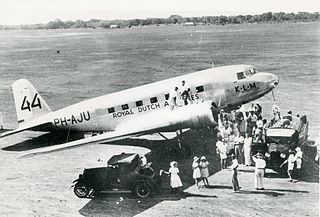
On 19 December 1934 the KLM Royal Dutch Airlines operated Douglas DC-2-115A Uiver was an extra scheduled international Christmas mail-and-passenger flight from Schiphol Airport in Amsterdam, the Netherlands, to Batavia in the Netherlands East Indies with eight intermediate stops.

On 25 June 1925, KLM-owned Fokker F.III H-NABM was a passenger flight from Schiphol Airport, the Netherlands to Paris, France. Due to bad weather it struck trees in the Forêt de Mormal and crashed. The pilot and all three passengers were killed.
















